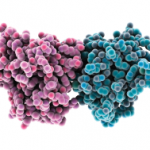It is unclear how circulating antibodies or immune complexes might gain entrance to the joint to initiate clinical disease. A potential answer may come from studies examining the serum-transfer model of arthritis in which serum from K/BxN mice, which develop spontaneous arthritis due to antibodies to a ubiquitous protein called glucose-6-phosphage isomerase (GPI), develop arthritis that begins shortly following serum transfer. Studies have shown that immune complexes formed by the anti-GPI antibodies induce vascular permeability mediated by the release of histamine that permits the pathogenic antibodies and immune complexes to enter the joint.19 Supporting a similar role in RA, immunoglobulin E ACPAs capable of degranulating mast cells, releasing histamine and other proinflammatory mediators, have been identified in RA, suggesting that a similar scenario might occur in early RA, in the transition from preclinical to clinical disease.20
An additional possibility is that the immune complexes are formed within the joint. As mentioned earlier, citrullinated proteins are present in the joints of patients with RA. Further, antibodies to citrullinated proteins as well as ACPA-producing B cells are enriched in the joints of patients with RA, thus facilitating the formation of immune complexes locally.21 As mentioned above, ACPAs containing immune complexes may promote inflammation by activating macrophages. Further, ACPAs from patients with RA are capable of activating both the classical and alternative pathways of complement. Supporting the relevance of this possibility in RA, earlier studies document the local activation of complement within the RA joint, including the presence of increased concentrations of C5a, which is capable of promoting inflammation by recruiting neutrophils and enhancing vascular permeability. Thus, ACPAs containing immune complexes are capable of promoting inflammation by multiple mechanisms, including activation though Fc receptors, TLR receptors, and complement activation.
Rationale for Suspecting a Role for TLRs in RA
Since the production of autoantibodies is T-cell dependent, this implies a role for antigen-presenting cells. Dendritic cell maturation, which enables optimal antigen presentation, is mediated through the activation of TLRs, suggesting a role for TLRs in the initiation of the disease. Now I would like to address how TLR signaling contributes to the persistence and progression of RA. I propose that the initial inflammatory response results in the increased expression and release of molecules that are normally resident within the cell and/or degradation of structural joint components exposing proinflammatory epitopes that may serve as endogenous TLR ligands. Clinical observations support the potential for the engagement of another pathway of joint inflammation once joint damage is initiated.

